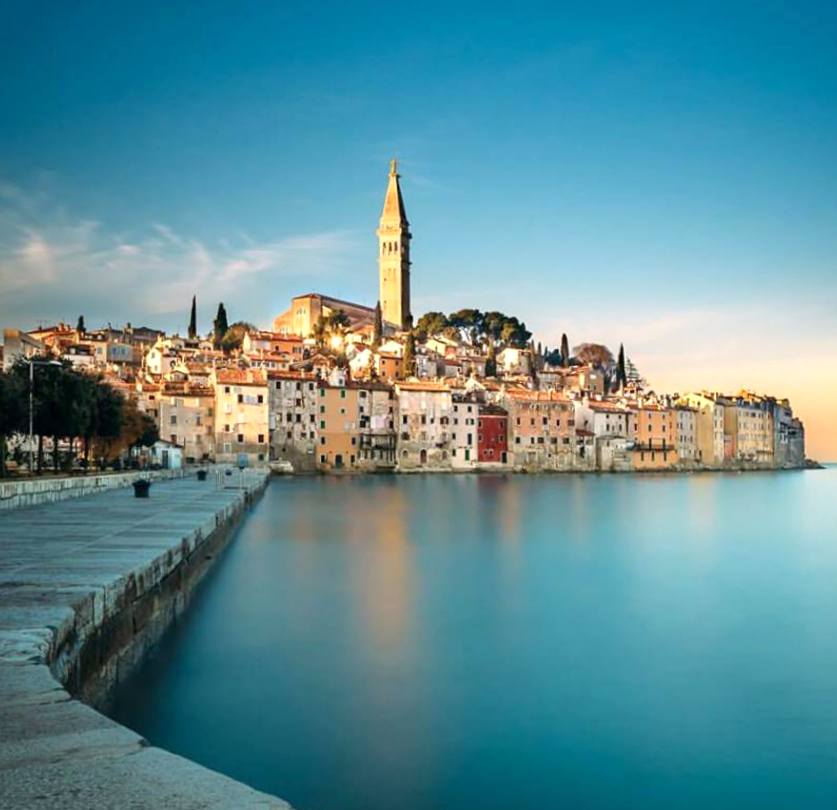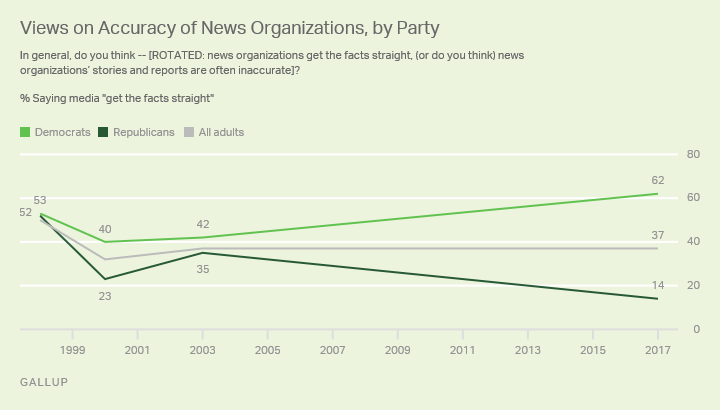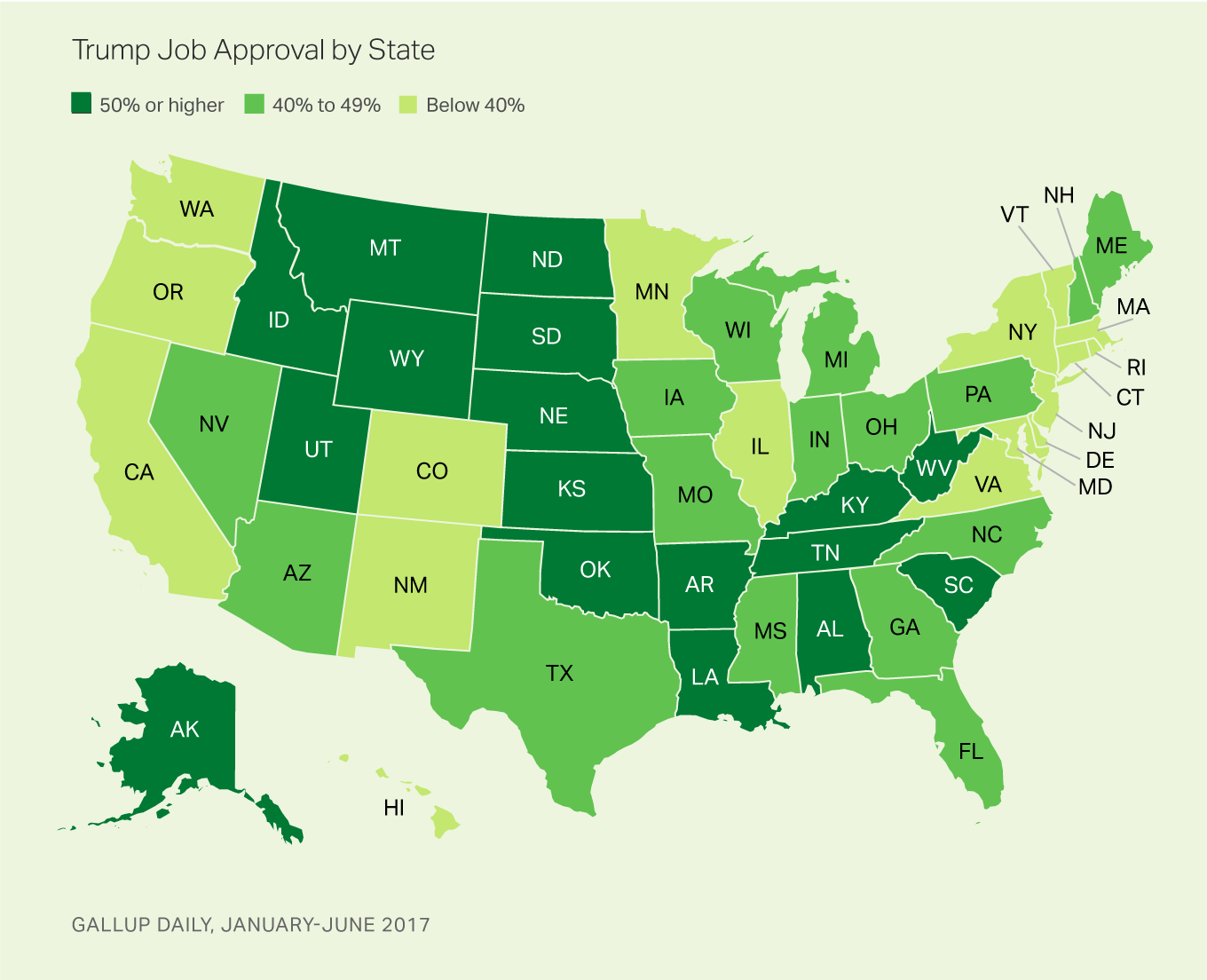The Daily Escape:

Rovinji, Croatia – photo by brotherside. Rovinji is a tourist resort and fishing port, situated on the Adriatic Sea. It is bilingual, with both Italian and Croatian spoken here.
Gallup reports that:
Just over a third of Americans (37%) in 2017 say news organizations generally get the facts straight, unchanged from the last time Gallup asked this question in 2003. But…major partisan shifts in beliefs on this topic have emerged over the past 14 years. Republicans’ trust in the media’s accuracy has fallen considerably, while Democrats’ opinions on the matter have swung in the opposite direction.
49% of college graduates say the news media generally get the facts right, compared with 36% of Americans who attended college, but didn’t graduate. 28% of those with no more than a high school education agree that the media get it right.
But education makes little difference in Republicans’ beliefs about the news media’s credibility. Among Republicans with at least a college degree, only 18% say the media gets the facts straight, similar to the 12% of Republicans without a college degree who say the same.
Republican’s trust in the American news media has fallen steadily from 2003 to today. The numbers are striking: Republicans’ trust plunged from 35% in 2003 to 14%, while Democrats’ trust in America’s news media increased from 42% in 2003, to 62% today.
Gallup first polled on media trust in 1998. Back then, more than half of both Republicans (52%) and Democrats (53%) believed news organizations generally got the facts straight. Here is a Gallup graph:

Both groups’ belief in the accuracy of the media fell dramatically in 2000, possibly due to bad election-night projections of the 2000 presidential election. Some networks first declared Al Gore, and later, George W. Bush the winner, before ending the night with no official winner. When surveyed a month later In December 2000, just 23% of Republicans said news organizations generally get the facts straight, a 29-percentage-point decline in the two years after the 1998 survey.
The next big Republican shift downward began in 2003. What happened in 2003? The reporting about WMD (weapons of mass destruction) in Iraq on GW Bush’s watch. The media either lied, or suppressed the findings by IAEA (International Atomic Energy Agency) that there were no WMD in Iraq. That lie helped move us into an unjustified war that had catastrophic results for both the Middle East and for America.
The paradox is that the Republicans’ distrust grew after that, while Democrats’ views improved. Perhaps the Republicans were angry that the press eventually reported the truth. Perhaps Democrats forgave the press after they finally reported the truth, turning their anger to George W. Bush for lying us into war.
And our Monday discussion of Sen. Lindsay Graham’s false meme that “Obama failed to unite us” can be linked to this as well. The Republicans lack of trust in the news media has led to their willingness to dismiss facts as “fake news”, enabling things like Graham’s lie.
That willingness empowers distortion of the truth as a “go-to” strategy in the GOP’s politics of persuasion.
Given the Gallup findings, Trump’s frequent attacks on the media may have been as much his taking advantage of GOP attitudes, as his creating a poor Republican view of the press by his use of the “fake news” meme.
On the Democratic side, their increased confidence in newspapers may be a counter-reaction to Trump’s criticisms. Gallup found in June that the percentage of Democrats who have “a great deal” or “quite a lot” of confidence in newspapers nearly doubled from 2016, rising from 28% to 46%.
The overall finding that a solid majority of the country believes major news organizations routinely produce false information may have disastrous consequences for our democracy. It is at least related to Americans’ diminished trust in US institutions, and our rising cynicism about the American political system, and our elected officials.
Democracy is impossible unless both our politicians and the press are honest.
Today’s music highlights another GOP lie, Jefferson Beauregard Session’s whopper that immigrants take jobs away from Americans. during his speech terminating DACA.
Here is “Immigrants (We Get the Job Done)” originally from the musical, “Hamilton”. This isn’t the version you hear in the musical. This version is from the “Hamilton Mixtec”, performed by K’naan, featuring Residente, Riz MC & Snow Tha Product:
Takeaway Lyric:
It’s really astonishing that in a country founded by immigrants,
“Immigrant” has somehow become a bad word.
Those who read the Wrongologist in email can view the video here.
















